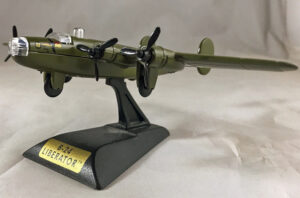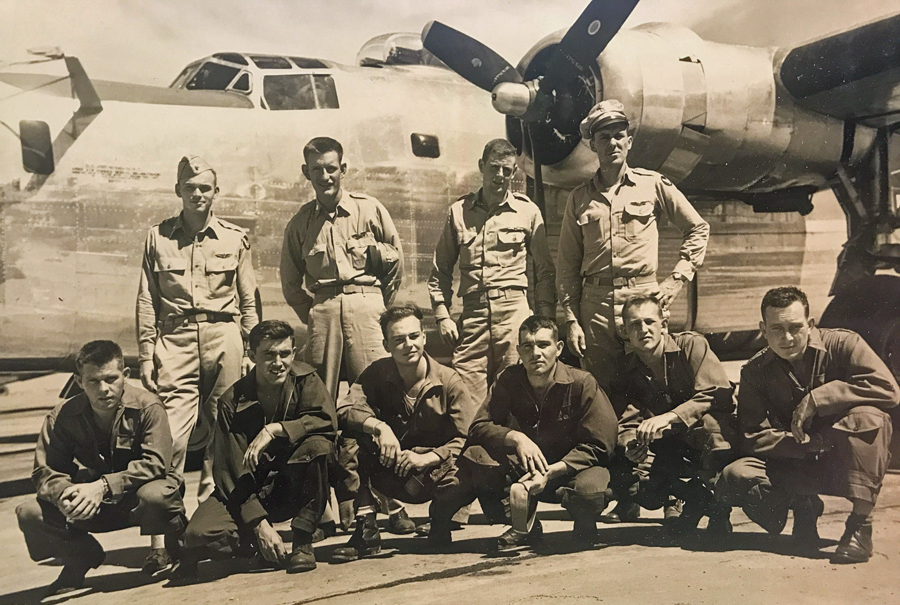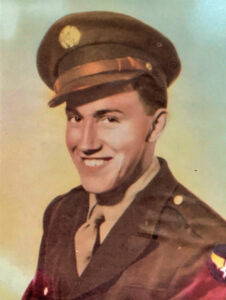True Tales from Canton’s Past: Coming Home
By George T. ComeauOn Pleasant Street there is a granite marker that is the dividing line between Canton and Stoughton. At 8 a.m. on the morning of Saturday, August 28, 1948, three Canton selectmen stood in the heat and haze of the morning sun. Selectman Maurice Ronayne shifted as he kicked up dust from the road. Selectman John Howard loosened his collar just a bit to let the bead of sweat run down his neck. And Selectman Carlton Taber adjusted his hat against the bright sun and squinted as he looked up the hill. Off to the side of the road a few dozen men of the American Legion and the Veterans of Foreign Wars waited silently. To anyone who came upon this somber scene, it was readily apparent that sorrow hung in the humid air at the boundary between Canton and Stoughton.
It had been just more than five years since Michael Callanan had been in Canton. He had come to Canton from South Boston in 1929 at age 6 when his father got a job as the foreman at the Sweetland Waste Company. Callanan grew up in an Irish household that was typical of many kids as the first generation of immigrant parents. William, the father, had emigrated in 1900 and mother Nora came in 1904. It is not hard to imagine the burgeoning family of four brothers and three sisters. When you add in mom and dad, there were nine people living above Moro’s Market on Washington Street across from the rectory at St. John’s church.
As countless other Irish Catholics had done, the children of school age were sent to parochial school, which in this case was across the street. Callanan completed three years of high school at St. John’s and graduated in 1937. Michael’s father had died the year prior, and so all of the family members found jobs. Callanan took a job at the A&P and in 1944 he was working for Chase Brothers on Sherman Street.
At age 19, on June 30, 1942, Callanan found himself at the steps of the Norfolk County Courthouse in Dedham. Inside a small office, Callanan sat with Mary Kelleher as she asked him questions for the draft board. Mary, also from Canton, looked at the boy and smiled as she helped him fill out the card. A small scar was noted on the boy’s right hand. Standing to be measured, Mary tousled Callanan’s light brown hair and noted the kindness of his blue eyes as she marked the draft registration card. At the bottom of the card, Callanan signed his name, “Michael John Callanan,” and in so signing, the wheels were set in motion, off to war and away from Canton.
Not a year would pass before Callanan was inducted into the Army in April 1943. Assigned to the Army Air Corps, he completed basic training in Miami Beach, followed by advanced courses at Keebler Field, Mississippi, Laredo Field at Laredo, Texas, the Army Air Base at Salt Lake City, the Davis-Monthan Air Base in Tucson, and the Air Field in Topeka, Kansas. He received instruction as an aircraft mechanic and would be a gunner in World War II. A very bright young man, Callanan was appointed as a sergeant and assigned to the 451st Bomber Group and the 724th Bomber Squadron in the famous 15th Air Force. His training was in B24 bombers and he was a fantastic nose gunner.
From Callanan’s base in Spinazzola, Italy, the 21 year old was assigned bombing runs over Germany, Austria, Hungary and Romania. As the recipient for the Air Medal for “meritorious achievement in aerial flight while participating in sustained operational activities against the enemy,” he was quite good at fighting the enemy during more than 20 separate missions and engagements.
At 12:20 p.m. on August 23, 1944, Callanan was in the nose of the “Liberator,” a goliath, four-engine, 56,000-pound bomber, as it streaked over Austria to strike enemy forces. The enemy was adept at creating a “firestorm of anti-aircraft cannon shells, rockets, and air-burst bombs, turning the skies into a hellish expanse of bullets, smoke, and flak.” A report from another plane in formation captured the scene: “The formation was attacked by several enemy fighters. I watched Lt. Beach’s airplane peel off to the left with the tail turret and elevators on fire, the plane appeared to be under control. I watched the plane descend approximately 1,000 feet before it disappeared from my view. I saw one parachute open. The approximate time was 1220 and the position was 47940’ N -15250’ E.”
As the plane descended, hunters on the ground shot at the plane. The German record of the crash described the scene: “The machine was attacked over the target by German hunters and shot into fire. It immediately went into a spiral dive. Fire broke out inside.” The pilot gave the command ‘bail out.’ The entire crew was able to leave the bomber. A very hostile atmosphere awaited the airmen on the ground. The pilot was insulted by the mayor in Annaberg as a ‘gangster.’ In fact, all 10 men bailed out and parachuted safely to ground.
As the midday sun filtered through the forest, each of the men set off to find shelter and create an escape plan. Callanan had the good fortune of encountering a forester who assisted him in devising an escape plan. Wasyl Sysek, the kindly man, said that he “intended to send him from the workers’ camp located in the woods of Styria to Marburg, Yugoslavia.” The intent was to help Callanan find his way to the front where the “partisans had advanced.” It was marvelous luck to have someone orient the young flyer, but by early that evening, Michael Callanan’s luck ran out. Three local villagers in the small town of Taschlbach took Callanan into custody and were instructed to turn him over to the second lieutenant of the SS stationed in Frein, Austria.
Second Lt. Fritz Thaler was a Czechoslovakian engineer by profession and was well educated. Thaler entered the war in September 1939 and was eventually inducted into the Waffen SS in July 1940. Serving in the western, southeastern and eastern fronts, it is fair to say the Thaler was an accomplished officer. A paper factory in Frein was in the process of being converted into an experimental laboratory and Thaler, as an engineer, was overseeing the work. Six of the captured American airmen were placed in Thaler’s custody on August 23 and 24. The order was that the men would be delivered as prisoners of war to Muerzsteg, located less than half an hour away. Four men went uncaptured, and of the remaining six, only four would be delivered into the hands of their captors. Lt. Phillip Pratt Jr. and Sgt. Callanan would not make their way into the prison camp.
At a military trial in 1951, Thaler gave a full confession as to the occurrences that day, and his testimony is both credible and riveting. “Lieutenant Pratt, an American flyer, was brought to the Aumann Inn at Frein where he was questioned and then taken to Muersteg.” Along with another SS officer, Thaler placed Pratt in the back of a small Fiat and began the drive that would transfer the prisoner. Halfway to the destination, the car broke down, and in the process of the repair, Pratt decided to make an escape. After he asked to get out of the car, the SS officers allowed him to stretch his legs, and within moments Pratt “continued running away from the car towards the direction of the river.” Thaler opened fire and let off three to five shots. The brave American fell to the ground and Thaler carried the body back to the car and delivered it to the gendarmerie post in Muerzsteg. Thaler then returned to Frein. Pratt had been the co-pilot of the mission, and was now dead.
At this point it was around 8 p.m. and Callanan had been captured by three foresters just five miles to the west of Frein. Thaler set off to pick up the prisoner, and interrogated Callanan before returning to Frein. Owing to the lateness of the hour, there was some debate as to what to do with Callanan. “It was decided due to the lateness of the hour to take the flyer to an unused paper factory, two kilometers from Frein, which was used as an emergency factory for the technical school.” As the Fiat drove through the entrance to the factory, a guard saluted them as they arrived.

Michael Callanan’s brother James proudly displayed this model of the “Liberator” in his home in remembrance of Michael.
The end for Callanan came swiftly, and in the words of Thaler, in the endeavor of escape. “It was a small room and then there was an opening without any doors leading to the machine hall and from the entrance the room might’ve been about 33 feet long and then there was about 20 feet again to the turbine in order to get the generator started in order to get light into the factory.” Callanan was close to the left side of Thaler, who had a pistol in one hand and a flashlight in the other. In the darkness, Callanan tripped Thaler, who slid in standing water on the cement floor. Falling to one knee, Thaler shot at Callanan as another officer opened his carbine at the young flyer. At age 21, Michael Callanan was dead on the cold wet floor more than 4,000 miles from Canton.
Callanan’s body was taken to the cemetery in Frein for burial. Thaler testified that he had to have the grave dug by his “non-coms and ordered the coffin upon refusal of the civilians to furnish one.” Thaler continued, “There was some difficulty in having the flyer buried in the local cemetery until they found that he was a Catholic.” Thaler had wanted Callanan’s body “to be buried in the first row of the cemetery which was reserved for residents of the town, but that this was prevented.” Antonie Weyrer, the daughter of the church sexton, recalled that Callanan was buried in that portion of the cemetery reserved for “criminals and suicides.” The family back in Canton held out hope that perhaps Callanan was a POW. It would take seven months for them to learn he was killed in action.
An autopsy performed two years later showed that Callanan died by a single .32 caliber bullet wound to the head and the first and second section of his sternum had been separated and indicated possible brutal treatment. After the war, Thaler went on trial in 1947 in Salzburg for war crimes and was sentenced to 25 years in prison. Upon an appeal in 1951, the War Crimes Modification Board of the European Command of the U.S. Army took up a review and a new hearing for Thaler. The reviewer wrote that he was “struck by the fact that the accused apparently gave a straightforward account of his participation in the killings of which he is charged, not only in his pretrial statement, but under oath during the actual trial. He did not evade or attempt to shift responsibility for the acts on his subordinate.” And, noting that it was brought out in the evidence that the “four additional flyers who also could have been killed by the accused, were delivered safely by him to the gendarmerie, and that Sergeant Callanan prior to his death had entered into a plan of escape which was frustrated by the arrival of the SS,” Thaler’s sentence was commuted to time served as an act of clemency and in light of the fact the reviewer believed Thaler did “what any other soldier would’ve done in attempting to stop the escape of his prisoners and did not commit the crimes alleged with any criminal intent.”
And so, on that humid day in August 1948, we again find ourselves back home in Canton as the body of Michael Callanan was brought to the town boundary between Stoughton. The selectmen performed the honorable act of personally escorting the body through the center of town. This was the funeral of our son from Canton, which was done with a solemn requiem mass at the very same church Callanan had attended as a boy. Cantonians all — Frank Raggani, Joseph Storme, Thomas Dockray, Joseph Mazzarini, Renzo Piana, and James Brown — accompanied the casket to St. Mary’s Cemetery, and Charles Lane, Joseph Pocaro, Rex Lewis, John Cushman, and William Parsons comprised the color detail along with the U.S. Air Force color guard. It was among one of the most solemn ceremonies ever witnessed in Canton.
The cortege traveled slowly to St. Mary’s Cemetery for Callanan’s final burial and resting place. A bronze plaque had been ordered to be placed as a marker. At long last, he was home. The 21-year-old airman was survived by his mother, his three sisters, and his three brothers. His family was informed that he had been awarded two Purple Hearts and the European-African Middle Eastern Campaign Medal with silver and bronze clusters. He was also the recipient of a Presidential Unit Citation with bronze cluster. Last week, the niece of Michael Callanan donated all of Callanan’s medals and his flight training manual, along with several other pieces of family memorabilia, to the Canton Historical Society. We are honored to have known this man, a true American hero, and may he continue to rest in peace.
Short URL: https://www.thecantoncitizen.com/?p=67789












